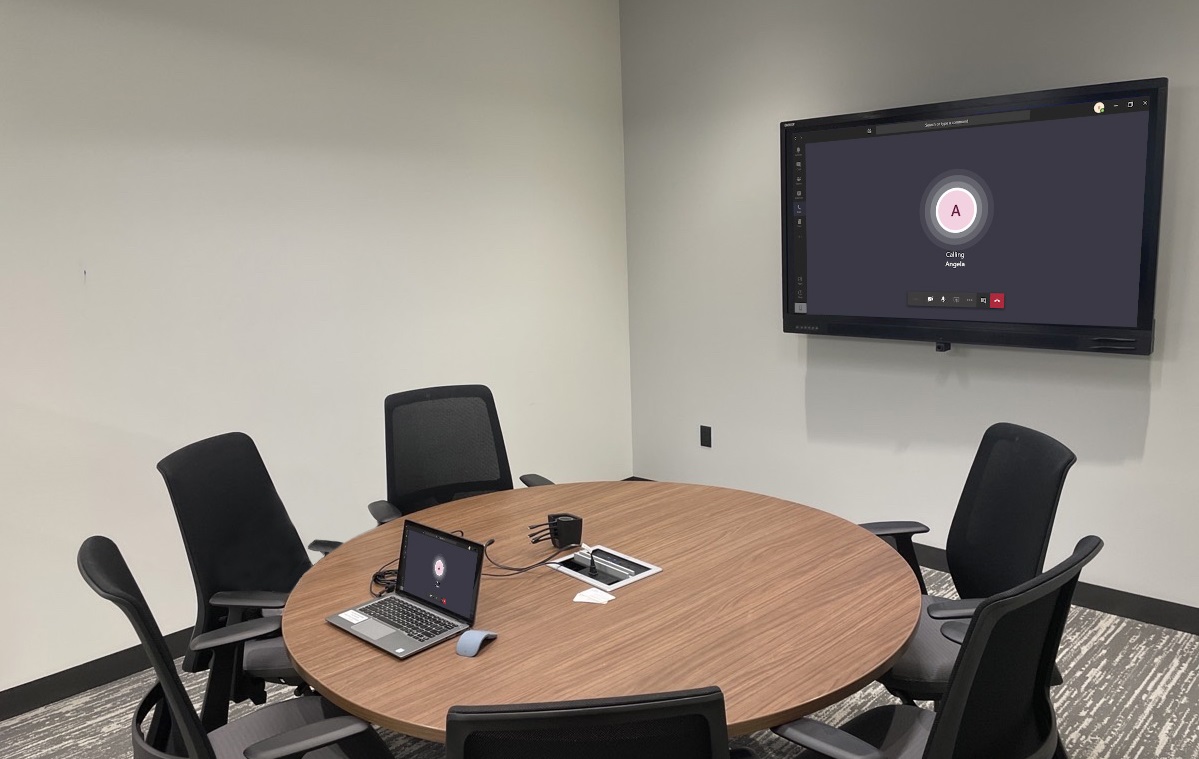The COVID-19 pandemic has accelerated many collaboration trends and put technologies like unified communications and videoconferencing near the top of the list of enterprise IT investments.
Zoom, Microsoft Teams, Google Meet, Cisco Webex and other platforms have become wildly popular in the new normal, with each reporting a massive uptick in users since the onset of the pandemic and remote work movement.
Each of those platforms has innovated and added new features designed to pull in new customers in what has become a very competitive space. Now, a new category of meeting room technology offers a solution to having to choose between Zoom Rooms, Teams Rooms and other in-room videoconferencing and collaboration systems: bring-your-own device (BYOD) and bring-your-own meeting (BYOM).
These systems essentially allow users to use their preferred videoconferencing platform with the room’s product-agnostic hardware.
Platform Agnostic
Some collaboration experts say the technology is here to stay since it allows users still concerned with sharing in-room devices and social distancing to use their own personal device to run the meeting,
According to Brian Rhatigan, director of business development at AV distributor Almo ProAV, in-room meeting systems like Microsoft Teams Rooms or Zoom Rooms can be restrictive, as they make it hard to connect with others that prefer a different platform.
“Microsoft and Zoom are definitely leading, as far as you know, the number of users but then there’s a long tail of people using other systems like Google Meet or WebEx,” Rhatigan says.
The argument for them, Rhatigan says, is user familiarity.
Since a huge portion of employees worked out of their homes, they got used to operating different platforms right on their laptop or other device. Making the transition back to the office will be a lot easier if they can simply plug in their laptop to the meeting room system and fire up a conference call on the platform of their choice.
Read Next: Touchless, BYOD Systems Will Dominate in Post-Pandemic Returns to Work and School
“You connect to the system, you’re using your own interface that you’re already comfortable with, and you don’t have to learn how to use the room technology,” Rhatigan says. “To me, that’s one of the biggest pros.”
Another benefit is the ability to share content and files. Sharing a spreadsheet, PowerPoint presentation or other content will be easier since those files are already on the user’s device. There are plenty of cloud systems that allow for easy sharing of content, but this makes it just a little easier.
BYOD systems also help cut down on the time spent starting a meeting. Since today’s users are adept at quickly starting meetings from their laptop, setting up a meeting should take no time at all.
On in-room systems, they’d have to sign in, access their profile and then start the meeting.
As far as disadvantages, Rhatigan listed just one: having to choose between different audio and video devices from the user interface when changing locations.
However, some wireless BYDO systems like the Barco Clickshare or Kramer Via portfolio allow the user to just walk in the room and connect via a button or app and have full connectivity to the AV and wireless sharing.
“I struggle to find real meaty cons to the bring-your-own meeting scenario,” Rhatigan says.
Not for Everyone
Indeed, conference room installers are seeing the demand for BYOD room solutions. RoomReady is a conference room integrator that services mostly large enterprise organizations, and BYOD is at least a part of the conversation with every customer, says President and CEO Aaron McArdle.
“Everybody wants to talk about it because they aren’t sure how they’re going to deal with their platform, their customers’ platform or their partners’ platform,” he says.
Even McArdle’s largest customers that are standardizing on a particular platform and building dedicated room solutions for that platform are designating some rooms as platform-agnostic BYOD rooms.
That middle ground of customers seeking both dedicated solutions and BYOD rooms make up about 70% of RoomReady’s clients, with the rest split between full BYOD and dedicated platforms.
Organizations adopting a hybrid work strategy and embracing extended remote work are rushing to add videoconferencing capabilities to their meeting rooms, and they are currently more concerned with quantity over quality.
“They wanna know how many rooms they can get installed for a $1 million budget – not if they can do 10 rooms really well,” McArdle says.
Those not fully buying into the BYOD trend say the serviceability and feature sets tend to win out over flexibility, McArdle says. Further, some customers say BYOD adds another layer of complexity and threatens to undo the move to simplify meeting room systems.
For small-to-medium-sized businesses, BYOD has a lot of long-term appeal, but dedicated room systems should win out at large enterprises, McArdle says.
“The guy who’s trying to manage 10 conference room has a much different value proposition than the guy who’s trying to manage 100, 1,000 or 10,000 rooms,” he said.
Currently, interoperability between some of those major platforms is splintered, but McArdle believes the industry will get to a point where there is more interoperability between different platforms and devices.
“I think the Microsofts, Zooms, Ciscos, Polys and Logitechs are going to realize they’re going to sell more the more friction that they remove,” McArdle says.










